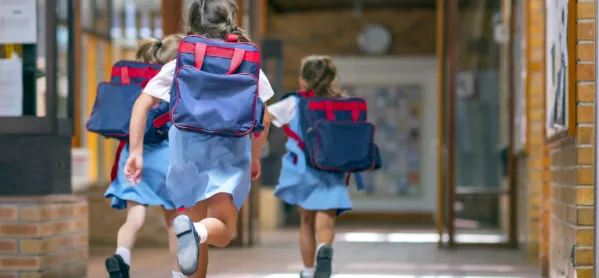As schools prepare to reopen worldwide, and with some countries’ children already back in the classroom, global charity Unicef has published a list of considerations for schools and headteachers to take into account if they plan to reopen.
Schools must assess “how learning and wellbeing can best be supported in each context, with special consideration of the benefits of classroom-based instruction vis-à-vis remote learning, against risk factors related to reopening of schools”, its Framework for Reopening Schools said.
Related: Study to probe impact of school closures on coronavirus
Long read: The inside story on the coronavirus school closures
News: Pupils ‘still mix’ despite pandemic school closures
Here are the 13 factors policy makers should take into account if they are planning to reopen:
Is classroom instruction essential?
Governments should consider if learning in the classroom is necessary to achieve desired learning outcomes for pupils, including “recognizing issues such as the importance of direct interaction with teachers for play-based learning with younger children and developing foundational skills”, the Unicef guidance says.
Can all pupils access high-quality remote learning?
Decision-makers should ask whether all pupils, at all ages, can access effective remote learning and whether this includes marginalised groups of pupils.
Is home learning sustainable?
Policymakers should think about whether remote learning is sustainable for pupils’ overall learning and well-being, considering their context and the pressures on parents and carers in the home.
Are pupils protected online?
Governments need to consider whether parents and carers can protect pupils from harassment or gender-based violence online while they are learning remotely.
Managing ‘high stakes’ transition points
The effect of the pandemic on important transition points such as starting school, moving from primary to secondary and finishing secondary school to move on to higher education must be taken into account.
Are schools ready to adapt to new teaching or hygiene procedures?
Policymakers should think about the readiness of teachers and educational authorities to adapt to new teaching methods or administrative approaches, and whether they are “able and ready to implement infection prevention and control measures”.
What child protection risks are there in keeping schools closed?
It should be considered whether pupils are at increased risk of domestic violence or sexual exploitation if they are not attending school.
School support impacted by closures
Policymakers should think about how school closures could be affecting other forms of support provided by schools, such as school health or nutrition activities.
Social impacts
“The social, economic and well-being related implications of children not attending school” must also be considered.
School capacity
The school’s capacity to maintain social distancing - for example, the size of classrooms compared with the number of pupils - and its sanitation and hygiene facilities should also be taken into account.
Exposure to higher-risk groups
Policymakers should think about “the level of exposure between the school population and higher-risk groups, such as the elderly and those with underlying medical conditions”, as well as how this can be mitigated.
Travel
How the school’s population travel to and from school should also be considered.
Risks to the community
Community-related risk factors, such as “epidemiological factors, public health and healthcare capacities, population density and adherence to social distancing and good hygiene practices” must be taken into account too when thinking about reopening schools.




